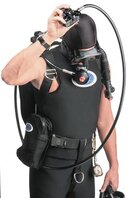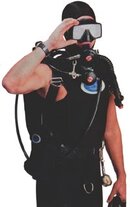- Messages
- 102,272
- Reaction score
- 106,449
- Location
- On the Fun Side of Trump's Wall
- # of dives
- 2500 - 4999
Which is what I stated in the first post, below.
You're still repeating yourself and still going in circles.
... but that wasn't the post that got me involved in this conversation ... this one was ...
Or you could just throw a dart at the GUE list of instructors and be humbled by whomever the dart lands on. You're basically guaranteed some of the best diving education money can buy.
It's rather relevent to the point I've been trying to make.
But you're quite correct ... I'm repeating myself.
... Bob (Grateful Diver)
---------- Post added April 3rd, 2015 at 01:47 PM ----------
I'd be more interested in getting the casualty safe than worrying about something as insignificant as a trailing hose.
A trailing hose ... particularly a long hose ... can easily become rather significant if it gets snagged on something or entangled in a distressed diver's body or equipment. At a minimum it could be a distraction at a time when you need to have your mind on more important matters, particularly if something like contact with an errant fin causes it to free-flow. At best, it's sloppy diving technique which can and should be avoided. It just compounds a potential risk factor.
At some point I'm hoping the penny drops that I'm talking about the 1970s, not today. Breathing one cylinder dry and de-canting was the gas management practice of the day.
Why didn't you just say so? What does that have to do with what BSAC teaches today?
... Bob (Grateful Diver)






